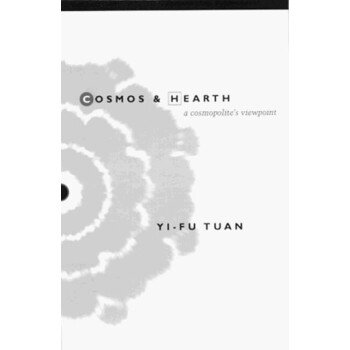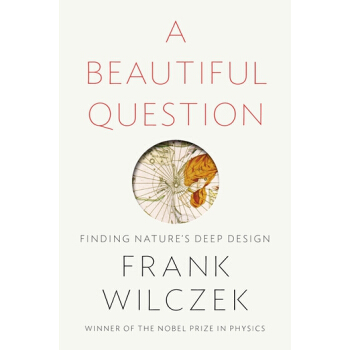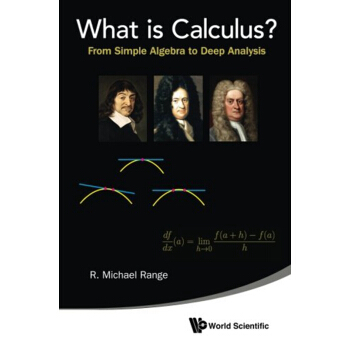

具体描述
Worldviews: An Introduction to the History and Philosophy of Science
Richard DeWitt (作者)
出版社: Wiley-Blackwell; 2 (2010年10月5日)
平装: 392页
语种: 英语
ISBN: 1405195630
条形码: 9781405195638
商品尺寸: 16.8 x 2 x 24.1 cm
商品重量: 689 g
内容简介
科学是什么?科学从何而来?科学如何形塑你的世界观?
学科学,不能不知科学从何而来;
不学科学,更不能忽视科学对你世界观的影响。
本书为科学史与科学哲学最佳入门书
无论你学不学习科学,这本书都能扩展并加深你对科学的认识。
从小接收亚里斯多德世界观的人,将地球是宇宙中心的信念视为常识;从小接收牛顿世界观的人,把动者恆动当作真理般的事实;不管从哪种世界观的观点来看,人们总认为自己世界观裡的信念是正确的。然而,什么是世界观?科学如何形塑我们的世界观?科学发现如何从某个发现开始,如雪球般愈滚愈大,最终颠覆人们的世界观,并且在人类文明史上造成两次世界观的大转换?
「世界观」是个有如拼图一样互相拼凑连结的信念体系。它并不只是把分散、独立、无关的信念凑在一起,而是一个紧密交织的信念体系。大多数人从小接受牛顿世界观长大,和牛顿世界观相关的信念就有如常识。但若我们从小接收亚里斯多德世界观,那么现在被认为错得离谱的亚里斯多德信念(地球是宇宙中心、物体因内在本质天性而运行等)也将同样有如常识。
这又引出下面的有趣题目:有没有可能我们现在拥有的世界观,最后和亚里斯多德的世界观一样证明为错误,即便我们的信念体系看起来如此一贯,且正确而有如常识?当我们看着亚里斯多德世界观,许多信念在我们看来陈旧而诡异。如果我们想想我们的后代,好比几百年后未来的子孙,有没有可能我们的信念,那些你我都觉得如此明显正确如常识的信念,在他们看来也是陈旧而诡异的呢?
历史、科学和哲学的关连是无止尽地複杂迷人。迪威特教授将本书分成三部分,第一部分介绍科学史与科学哲学的基本问题,包括世界观的概念、科学方法和论证、真理、证据,经验事实和哲学性/概念性事实的对照、可证伪性、工具主义和实在主义。第二部分,则探索从亚里斯多德世界观到牛顿世界观的转变,并指出这些变化中哲学性/概念性问题所起的作用,这部分也为第三部分的讨论打下基础,当考量到近代科学发现后,我们自己某些哲学性/概念性「事实」也必须要放弃。第三部分则介绍近代发现与发展,其中以相对论、量子理论和演化论最着名。这些新发现和发展大幅改变人们从小接受的关键信念的同时,也让我们朝向新的世界观迈进。
《世界观》一推出,就普遍受推崇为科学史与科学哲学的最平易入门书之一。作者理查.迪威特也因为能以十足吸引人的态度来呈现複杂概念,而获得好评,成为美国大一和通识课,教授科学史、科学哲学入门课程的最佳首选。由于本书关注基本概念问题,宏观两千年科学思潮和发展,并进一步思考近代科学发现对西方世界观的挑战,为各种程度的读者,提供了反思西方科学思想本质与发展所需的关键工具。
本书特色
?作者以创新方法介绍科学史和科学哲学,利用图表与插图,将科学镜头更清楚聚焦在通常模煳带过的问题上,将複杂科学概念化为清晰明白的说明,极适合初学者阅读,可读性高。
?介绍科学史和科学哲学最根本的问题,什么是真理、经验事实/概念事实等等,涵盖史上对科学世界观产生冲击的历史发展和哲学主题。
?宏观两千年的科学思潮与发展,如何形塑并转换人们的世界观,探索从亚里斯多德的世界观到牛顿世界观的变迁。
?探讨近代发展,特别是相对论、量子力学和演化论,为西方世界观带来的挑战。
Updated throughout and with three entirely new chapters, Worldviews: An Introduction to the History and Philosophy of Science, Second Edition furthers its reputation as the definitive introductory text on the historical developments and philosophical issues that inform our scientific view of the world around us.
-Represents an innovative introduction to the history and philosophy of science, designed especially for those coming to the subject for the first time
-Updated new edition features the addition of chapters focusing on scientific laws, evolutionary theory, and implications of evolution
-Covers the key historical developments and philosophical themes that have impacted our scientific view of the world around us
-Analyzes the transitions from the Aristotelian worldview to the Newtonian worldview to a new and currently developing worldview
-Explores challenges to the Western scientific worldview brought on by recent discoveries
名人推荐
"Quite simply, this is one of the most accessible – and teachable – introductions to the history and philosophy of science I've seen in over two decades of teaching. DeWitt's exposition and discussion – manifestly honed by extensive classroom teaching experience – are exceptionally clear, and helpfully complimented by some of the best diagrams I've seen. DeWitt thus makes complex ideas and developments cogent and straightforward, especially for undergraduates and those approaching the history and philosophy of science for the first time."
—Charles Ess, Drury University
"Richard DeWitt's Worldviews is a splendid introductory text. It is organized around themes – traditions and their overthrow – geared to engage undergraduates. It is historically informed and philosophically sensible. Best of all, it abounds in examples skillfully drawn from the physical sciences and made accessible to the non-specialist. The philosophy of science students encounter through Worldviews will strike them as the philosophy of real science – the science of Newton, Einstein, Copernicus, and Aristotle – and not some denatured surrogate for science concocted by philosophers so that it might succumb to the tools of their trade."
—Laura Ruetsche, University of Pittsburgh
媒体推荐
"Written in clear and comprehensible prose and supplemented by effective diagrams and examples, Worldviews is an ideal text for anyone new to the history and philosophy of science. As the reader will come to find out, DeWitt is a gifted writer with the unique ability to break down complex and technical concepts into digestible parts, making Worldviews a welcoming and not overwhelming book for the introductory reader." (History and Philosophy of the Life Sciences, vol. 28-2)
"The author is to be commended for the rare clarity of his writing, and for the truly impressive, most useful diagrams exemplifying many abstruse concepts and theses of quantum and relativistic theories. Unlike many other introductions to philosophy of science, DeWitt's book is at once historically informative and philosophically thorough and rigorous. Chapter notes, suggested readings, and references enhance its value". (Choice)
"This is a brilliantly clear introduction (and indeed reframing) of the history and philosophy of science in terms of world-views and thier elements.... In addition, the book is incredibly well-informed from both a scientific and philosophical angle. Highly recommended." (Scientific and Medical Network)
作者简介
Richard DeWitt is Associate Professor and Chair of the Department of Philosophy at Fairfield University. In addition to the history and philosophy of science, Professor DeWitt’s research interests include mathematical and philosophical logic, and the philosophy of mind.
理查.迪威特是美國費爾菲爾德大學(Fairfield University)的教授。除科學史和科學哲學外,他的研究領域為數學與哲學邏輯,以及心智哲學。
目录
List of figures.
Acknowledgments.
Introduction.
Part I: Fundamental Issues .
1. Worldviews.
2. Truth.
3. Empirical Facts and Philosophical/Conceptual Facts.
4. Confirming and Disconfirming Evidence and Reasoning.
5. The Quine–Duhem Thesis and Implications for Scientific Method.
6. Philosophical Interlude: Problems and Puzzles of Induction.
7. Falsifiability.
8. Instrumentalism and Realism.
Part II: The Transition from the Aristotelian Worldview to the Newtonian Worldview.
9. The Structure of the Universe on the Aristotelian Worldview
10. The Preface to Ptolemy’s Almagest: The Earth as Spherical, Stationary, and at the Center of the Universe.
11. Astronomical Data: The Empirical Facts.
12. Astronomical Data: The Philosophical/Conceptual Facts.
13. The Ptolemaic System.
14. The Copernican System.
15. The Tychonic System.
16. Kepler’s System.
17. Galileo and the Evidence from the Telescope.
18. A Summary of Problems Facing the Aristotelian Worldview.
19. Philosophical and Conceptual Connections in the Development of the New Science.
20. Overview of the New Science and the Newtonian Worldview.
21. Philosophical Interlude: What is a Scientific Law?
22. The Development of the Newtonian Worldview, 1700–1900.
Part III: Recent Developments in Science and Worldviews.
23. The Special Theory of Relativity.
24. The General Theory of Relativity.
25. Overview of the Empirical Facts, Mathematics, and Interpretations of Quantum Theory.
26. Quantum Theory and Locality: EPR, Bell’s Theorem, and the Aspect Experiments.
27. Overview of the Theory of Evolution.
28. Philosophical and Conceptual Implications of Evolution.
29. Worldviews: Concluding Thoughts.
Chapter Notes and Suggested Reading.
References.
Index.
用户评价
这本书的行文风格非常流畅,这一点尤其值得称赞,它成功地在保持学术严谨性与保持阅读趣味性之间找到了一个绝佳的平衡点。作者在阐述诸如“范式转换”或“不可通约性”这类高深概念时,并没有采取那种冷冰冰的纯粹概念堆砌的方式。相反,叙述中常常穿插着生动的历史案例和富有洞察力的类比,使得那些抽象的哲学思辨仿佛有了鲜活的血肉。我感觉自己不是在被动地接收知识,而是在和一位经验丰富的导师进行一场深入的对话。比如,当他讨论到科学革命时期那些关键人物的思维模式转变时,那种抽丝剥茧的分析,让人对“科学是如何成为科学的”这个问题有了更深层次的体悟。对于一个想真正理解科学精神而非仅仅记住知识点的人来说,这种叙事技巧是极其宝贵的,它构建起了一座通往科学思想殿堂的坚实阶梯。
评分书中对于科学知识的累积性和革命性之间的辩证关系的探讨,着实让我深思了很久。很多科普读物倾向于将科学史描绘成一条直线发展、不断积累的完美路径,但这本书却毫不避讳地揭示了科学发展中那些充满争议、断裂和非理性色彩的瞬间。它不神化科学家,而是将他们置于特定的社会、文化和历史语境中进行考察,这种去魅化的处理,反而让我更加敬佩科学作为一种人类活动的复杂性。我特别欣赏它对“观察何以成为观察”的哲学追问,这迫使读者跳出“事实就是事实”的直觉性判断,去反思我们所依赖的认知框架本身就是历史建构的产物。这种批判性的视角,对于培养独立思考能力至关重要,它教导我们,即便是最坚固的科学真理,也需要被持续地审视和检验。
评分这本书的结构安排体现了编纂者的匠心独运。它似乎并非简单地按照时间顺序罗列科学事件,而是围绕着几个核心的哲学主题进行组织和串联。这种主题导向的叙事,使得不同时代、不同学科的科学实践,都能被拉入同一个理论框架下来进行比较和分析,从而展现出科学思想演进的内在逻辑一致性。例如,关于“实在论与反实在论”的章节,巧妙地将古代的宇宙观与现代物理学的解释困境联系起来,构建了一个跨越千年的对话。这种宏观的结构布局,帮助读者建立起一个清晰的知识地图,避免了在浩瀚的科学史细节中迷失方向。对于想要建立完整科学哲学框架的初学者而言,这种精心设计的路径,远比零散的知识点拼凑要高效得多,它提供了一种看待知识的整体视角。
评分这本书的装帧和纸质确实让人眼前一亮,作为一本学术入门读物,它在实体上的质感处理得相当到位,不像有些译著或影印版那样粗糙。我拿到手的时候,首先注意到的是封面的设计,那种沉稳又不失现代感的风格,很符合“科学史与科学哲学导论”这个主题的厚重感。内页的排版也做得不错,字距和行距都比较舒适,长时间阅读也不会感到眼睛特别疲劳。特别是它采用了清晰的字体和恰到好处的图表布局,这对于理解复杂的概念至关重要。 科学哲学和科学史本身就是两个容易让人望而却步的领域,但这本书在视觉呈现上的友好度,无疑降低了读者的心理门槛。我想,对于许多初次接触这类严肃主题的读者来说,一个好的载体体验是保持阅读动力的关键。它不只是知识的搬运工,更像是一个精心准备的课堂,让人愿意坐下来,耐下心去探索那些宏大叙事背后的微观逻辑。这种对细节的关注,体现了出版方对学术严肃性的尊重,同时也照顾到了现代读者的阅读习惯。
评分读完之后,我最大的感受是,这本书极大地拓宽了我对“知识的本质”的理解边界。它不仅仅是关于牛顿或爱因斯坦的故事,而是关于人类如何试图理解和描述世界,以及这种描述工具(即科学)本身的局限性和力量。它让我明白,科学哲学并非高高在上的玄学思辨,而是我们理解日常经验和重大科学发现的底层操作系统。这本书成功地将晦涩的哲学语言“翻译”成了可以被认真对待的智力挑战,而不是佶屈聱牙的文字游戏。它激发了我去重新审视自己过去接受的许多“常识”,并开始用更审慎、更具历史意识的眼光去看待当前的科学前沿。这种思维方式的转变,远比记住书中的任何一个具体概念来得更有价值,它塑造了一种更深刻、更具包容性的世界观。
相关图书
本站所有内容均为互联网搜索引擎提供的公开搜索信息,本站不存储任何数据与内容,任何内容与数据均与本站无关,如有需要请联系相关搜索引擎包括但不限于百度,google,bing,sogou 等
© 2025 book.coffeedeals.club All Rights Reserved. 静流书站 版权所有




















